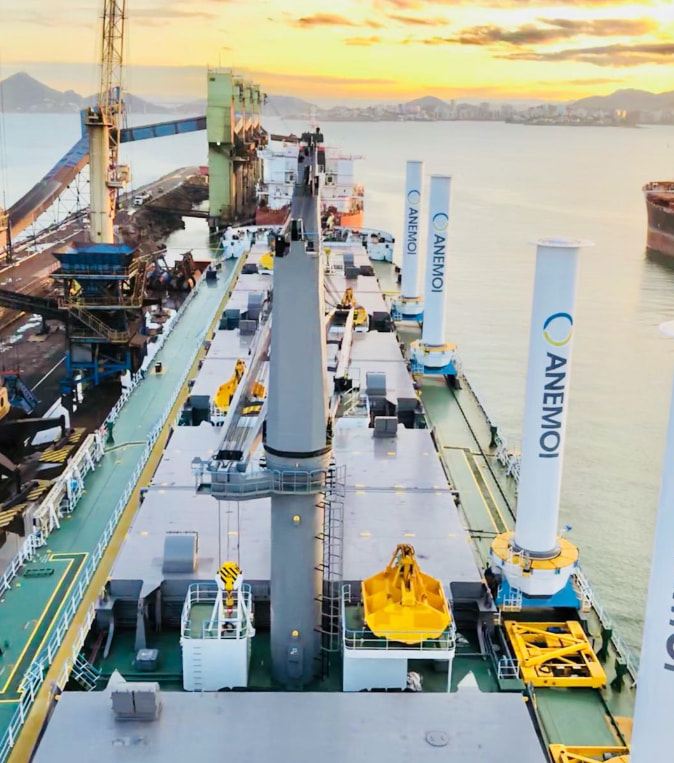
Overview
- 64,000DWT Geared Ultramax Bulk Carrier (operating globally)
- Yard: Jiangsu Haitong Offshore Engineering Equipment
- Ship Design: SDARI (Shanghai Merchant Ship
- Design and Research Institute)
- Class: Lloyd’s Register
- Client: Blue Planet Shipping
- Delivered in January 2018

Approach
- 4 Rotor Sails (2m x 16m) were installed
- Each Rotor Sail was installed with Anemoi patented Rail
- Deployment Systems to ensure they could be easily moved prior to commencing port operations
- Mobilisation of global supply chain and full stakeholder engagement, including management of the Class approval process
- Limited available deck space on the vessel required an innovative approach to Rotor Sail placement and Deployment System integration
- Rotor Sails were successfully installed, avoiding clashes with deck out-fittings, ship cranes, hatch covers, shore cranes and loaders
- All Rotor Sails are automated and controlled from the Bridge Control Unit (BCU)
- Installation of equipment was achieved in less than 2 hours per unit
Results
518
Days at sea
174,000
Distance Sailed (NM)
9,000
Longest Voyage (NM)
50
Ports visited
Estimated Savings
Based on wind data during November 2019 to January 2020 while the ship was sailing on one of its regular routes, Nantong to Vancouver and back, the estimated savings for the m/v Afros were 12.5% (reduction of 73 tonnes of fuel and 235 tonnes of CO2).
These savings and the sea testing performance are under evaluation by a 3rd party organisation for validation.
Since installation, routine maintenance requirements have been minimal (see below) and spare parts have been limited to consumables such as lubricants.
Maintenance on the Rotor Sail
- Relubrication of Upper Bearing
- Visual inspection of Rotor
- Visual inspection of load path structure
- Visual inspection of Upper and Lower Bearings
- Lubricant samples taken for analysis
- Paint touch up of external surfaces
- Software update of control system to include new features and patches
Maintenance on the Rail Deployment System
- Inspection of load path structure and mechanicals
- Battery inspections
- Relubrication of Drive and Lifting systems
- Recalibration of sensors
- Inspection of Rails and fixings to deck
Case Studies
Take a closer look at some of our installations to find out how projects are executed and the operational results so far.